I confess: Mt. Rushmore was never on my list of places to see. For one, I prefer natural spaces left as natural spaces. For another, I find it distressing that the Native Americans who hold the Black Hills sacred had the land taken from them by gold-hungry people of European descent. On the other hand, I'm a descendent of the Europeans who despoiled the Eastern tribes of their land and sacred places. It is good to be reminded of the complexities in which we all participate.
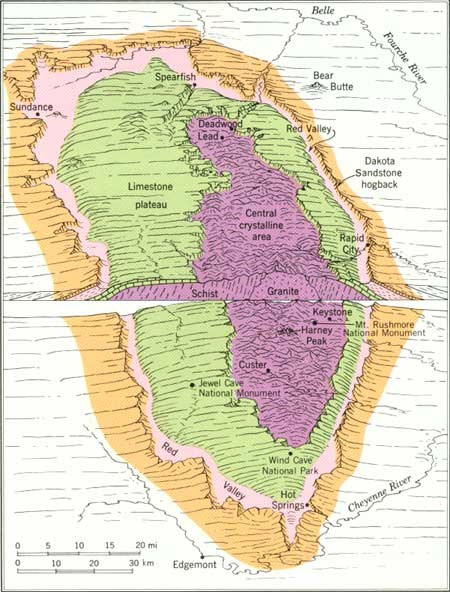
We started our first day with a "rock talk" from one of the geology professors at the South Dakota School of Mines and Technology. We would be touring the SDSMT geology museum later that day.
The Black Hills are an anomaly in the immediate surroundings. They are believed to have been created by the same uplift that created the Rocky Mountains. No one knows why they are so far away.
East of the Black Hills, a shallow inland sea created completely different types of rocks -- sedimentary rocks like those we will see in the Badlands. Farther east still, glaciers scoured the land creating the flat farmlands east of the Missouri that South Dakotans call East River. Most of our travels would be on the western side of the Missouri.
This geologic map from the National Park Service shows the concentric layers of the rocks with the oldest rocks in the middle. The cut-away shows how those old rocks underlay the area. The pink color identified as "Red Valley" in this image is also known as the "Race Track."
Mt. Rushmore and the Crazy Horse Memorial are both found in the southern portion of the oldest granite formations, just below the cutaway portion of this map.
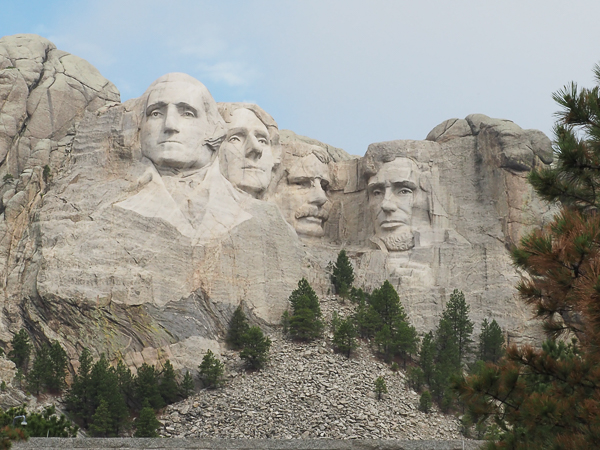
As it happened, I almost DIDN'T get to see the carvings. This was the view when we first arrived. Within 5 minutes fog had settled in and the mountain was completely obscured.
The carvings were designed and executed by sculptor Gutzon Borglum. After his death, finishing touches were added by his son, Lincoln, also a sculptor.
Originally Jefferson's head was to have been to the left of Washington, but the granite turned out to be unsuitable. The preliminary work there was blasted away and Jefferson moved to the other side. Note the dark seam in the rock below Washington. It also figures in the eventual design of the monument.
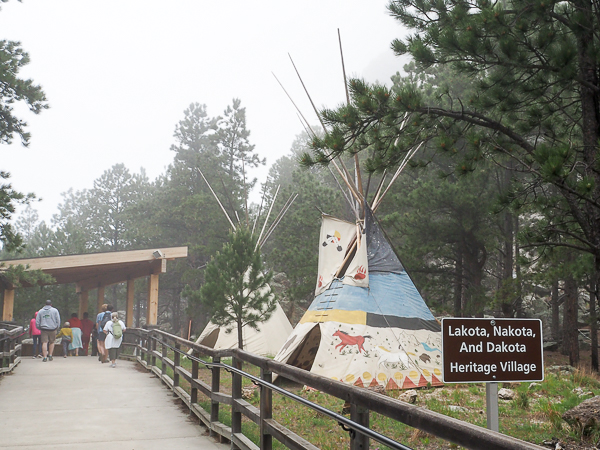
The fog was a good thing for me because it forced me to focus on other things at the park -- including the presentation by a representative of the Lakota nation at this interpretive center.
Up until this time I only had a vague notion of the complexity of the Native American peoples who occupied the plains. For example, what I had always known as "Sioux" is a collective of seven major groups. Much more detail can be found in the Wikipedia article that aligns with what I learned on this trip.
The Lakota were the most represented in our limited contacts with Native Americans.
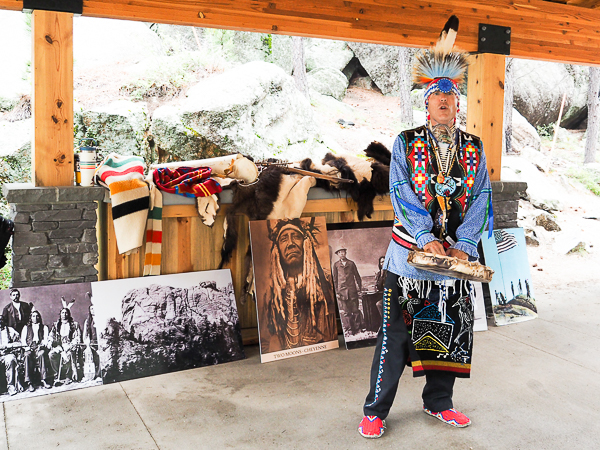
This young man is a member of the Lakota tribe.
He pointed out that the term "Sioux" was adapted from the Ojibwe, the Lakota's traditional enemies. Understandably it means "snake" or "enemy," and is not the term the Lakota and others use for themselves. "Lakota" and "Dakota" both translate to "friend" or "ally."
On the ground to the left of the presenter is a picture of Mt. Rushmore before the monument was carved.
After his talk and his song, he told us of a traditional Lakota phrase: Mitakuye Oyasin, which means "we are all related."
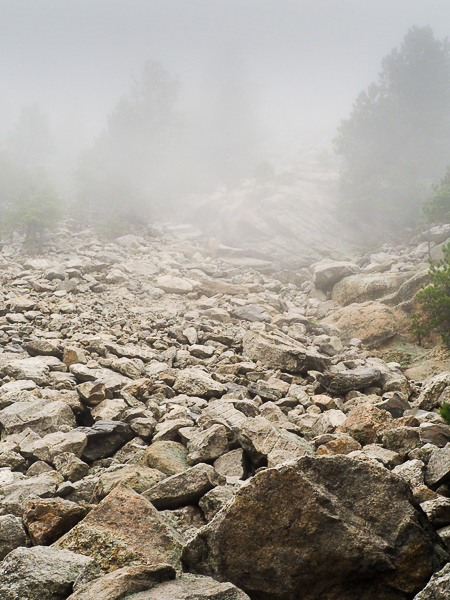
The view looking up to the carvings on Mt. Rushmore.
The sculpture was created by blasting away varying amounts of rock. A Smithsonian Magazine article tells the story of its creation.
The vast majority of the carving was done with dynamite. Borglum and his crew were experts in using precise large and small charges to remove precision amounts of granite.
All that rock ended up at the foot of the mountain as shown here.
While I was taking this picture a family walked past and one of the children plaintively asked why they were visiting here. I felt sorry for those who missed the view they had come so far to see.
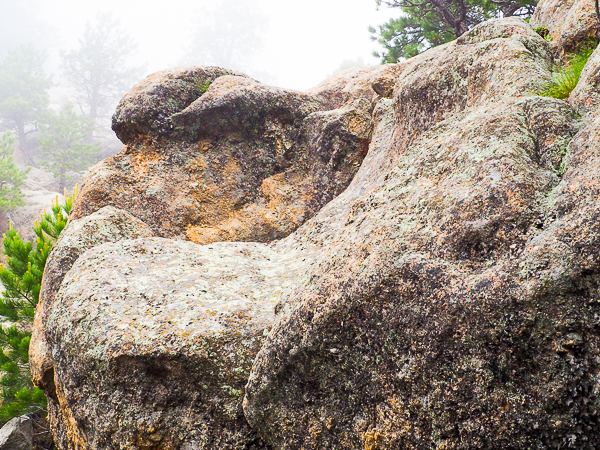
Since it wasn't possible to see the monument, as I hiked on the trail around the base, I focused on the natural rock formations. They came in many styles like this swoopy form here.
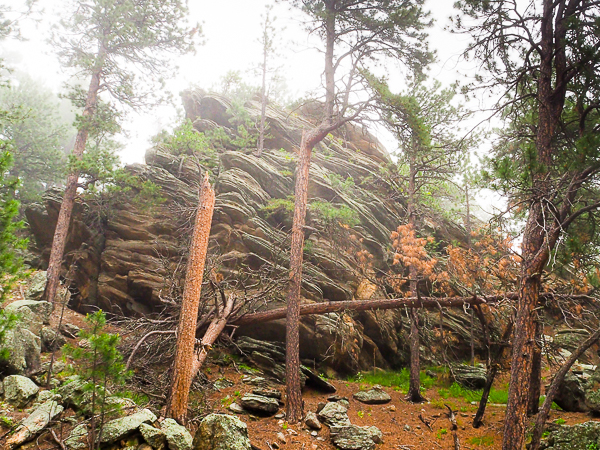
Or in layers as shown here.
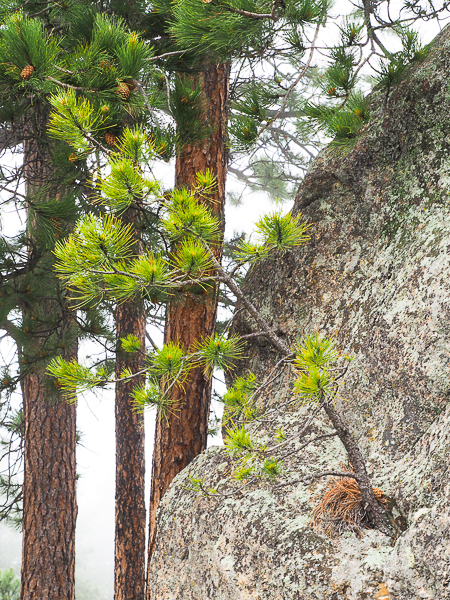
Dynamite may be quicker, but trees are adept at taking root and carving rock as well.
Even rock weathers, though, and maintaining Mt. Rushmore takes constant monitoring and repair.
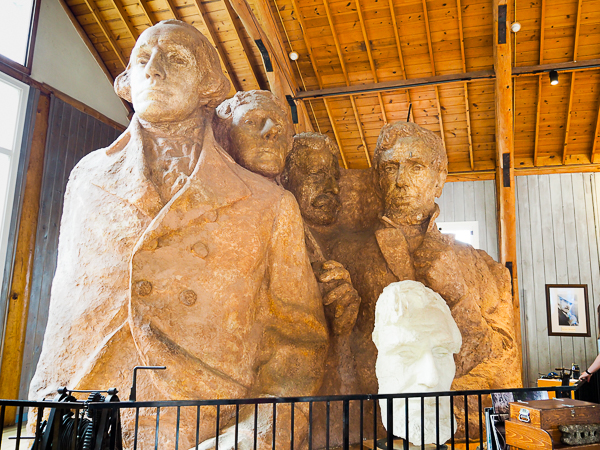
Borglum's original concept was for the presidents' torsos to be included, as shown here in the scale model, instead of just the heads.
All of the online resources I've found state that this plan was abandoned for two reasons: Borglum's death and lack of funding.
What we were told at the site was that the unsuitability of the rock on the lower levels (remember that dark seam in the image above) did not lend itself to carving. Only Washington has more than his head.
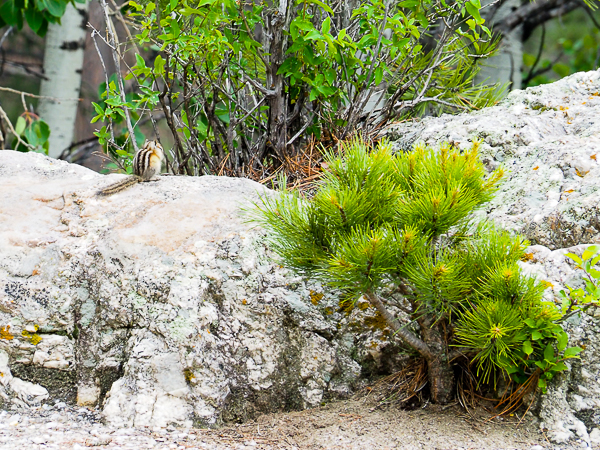
The only wildlife I was able to capture at Mt. Rushmore was this chipmunk. There were many of them around, but they moved VERY fast. This was the only one that posed for the camera.
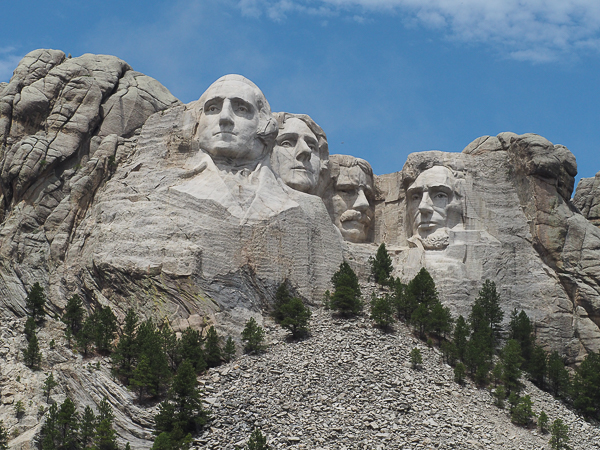
Right before we left, the fog lifted and we were able to see the monument again. It is designed to be best viewed in the morning. Later in the day the presidents' eyes are shaded and creepy-looking.
Click your "back" button to return to the previous page or click for our picture album.